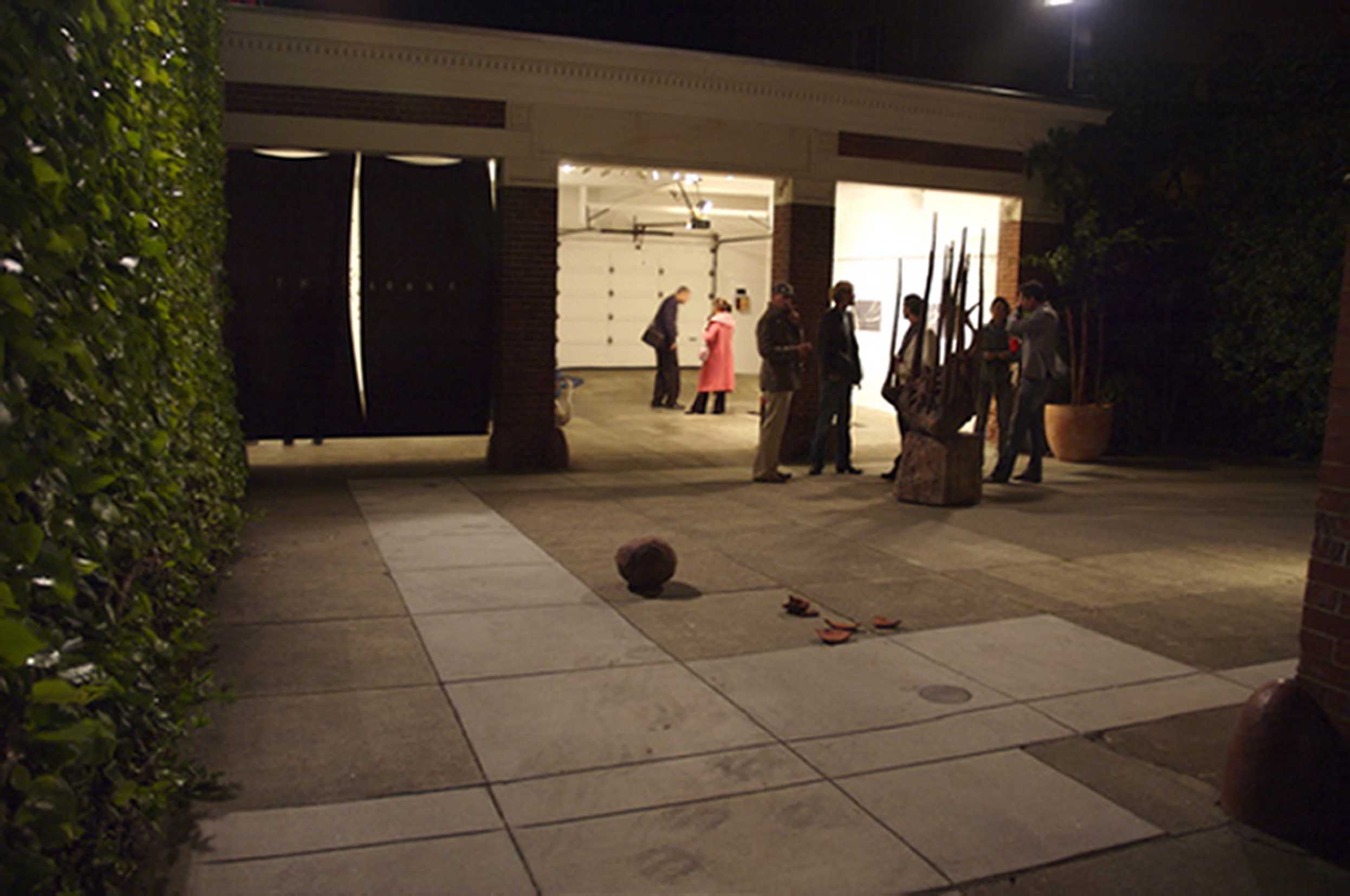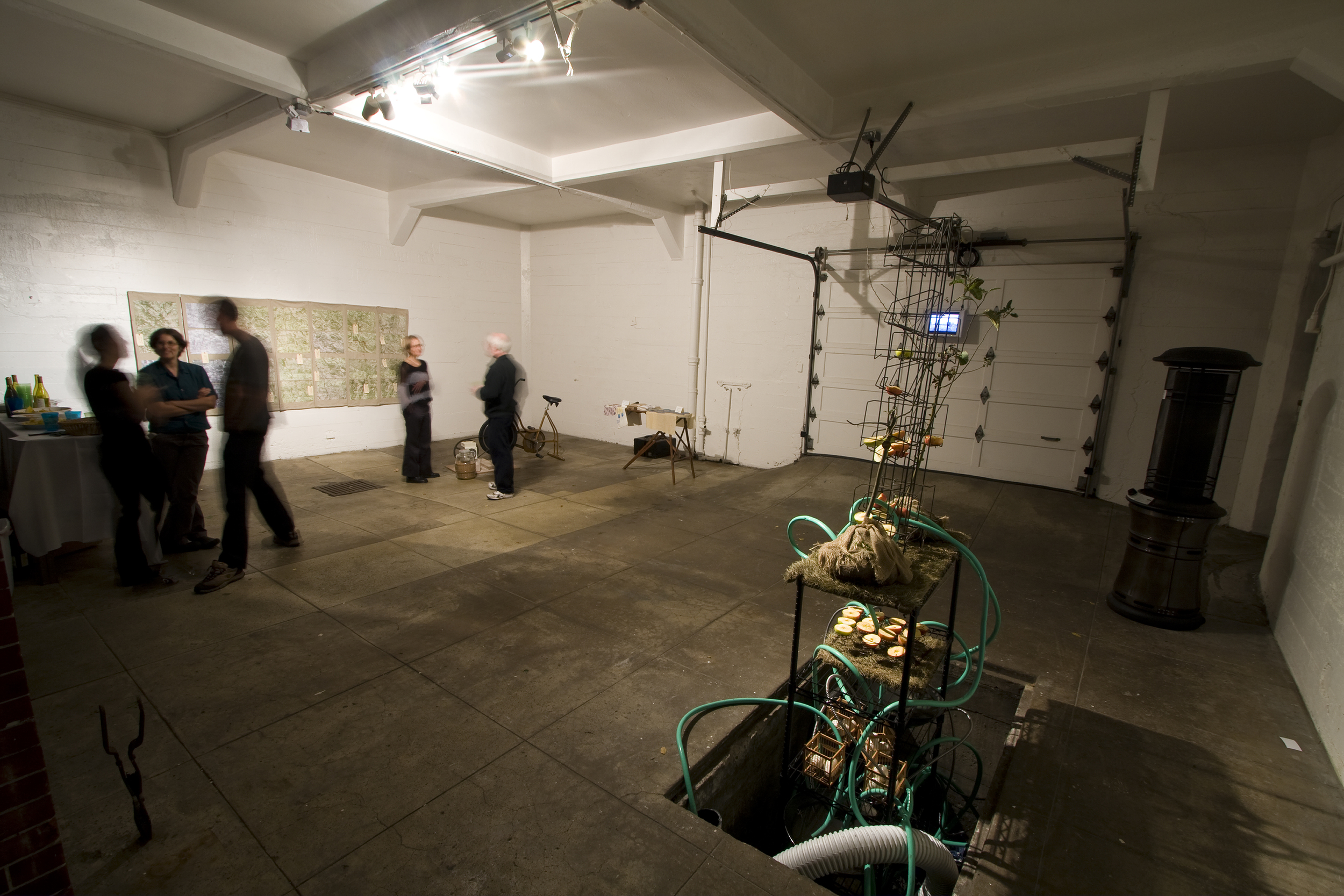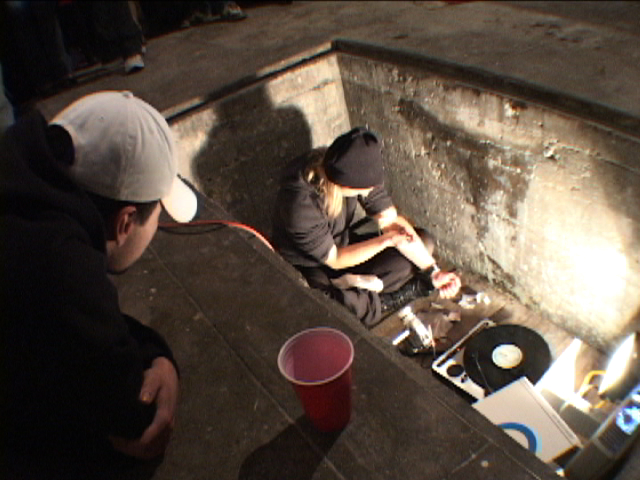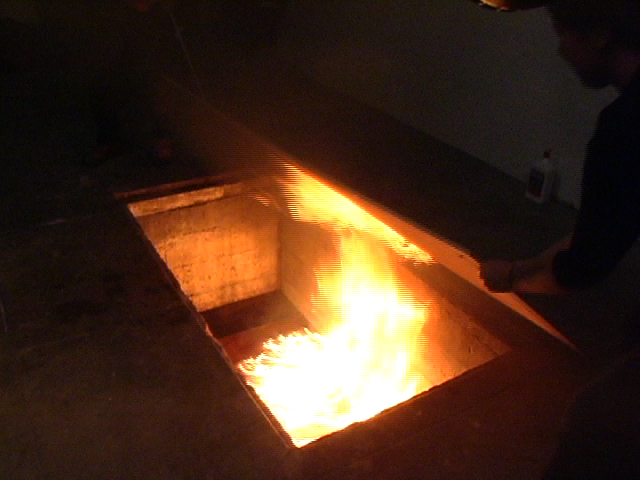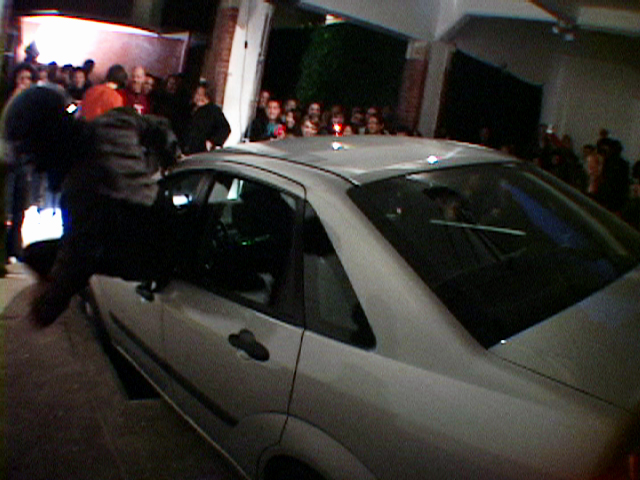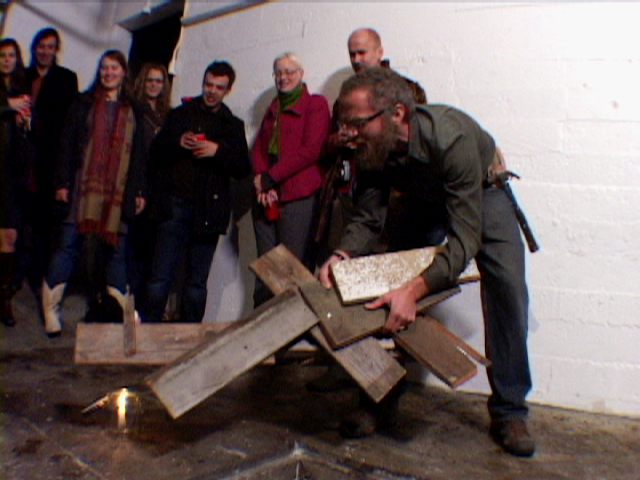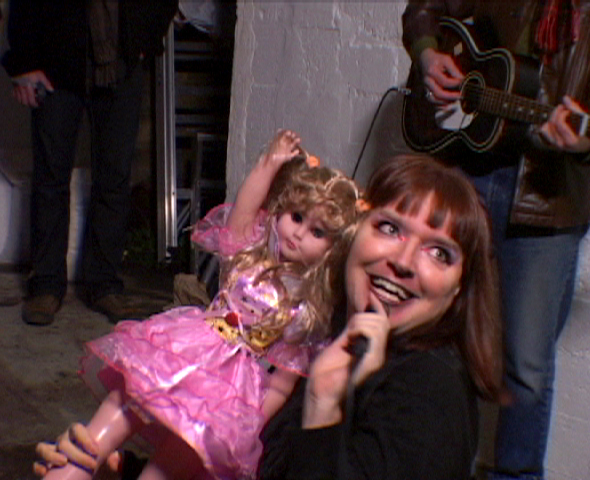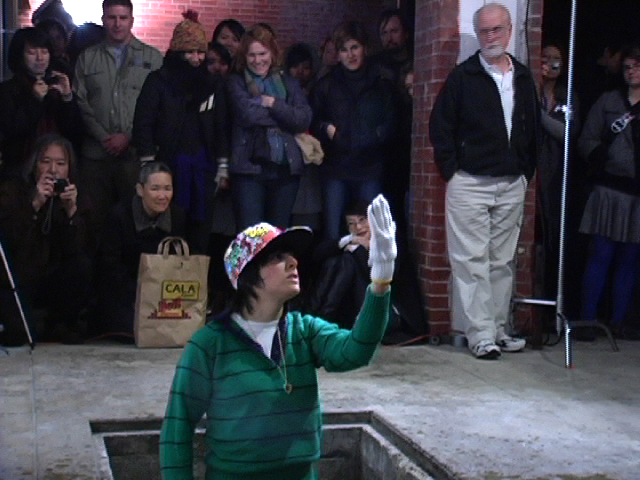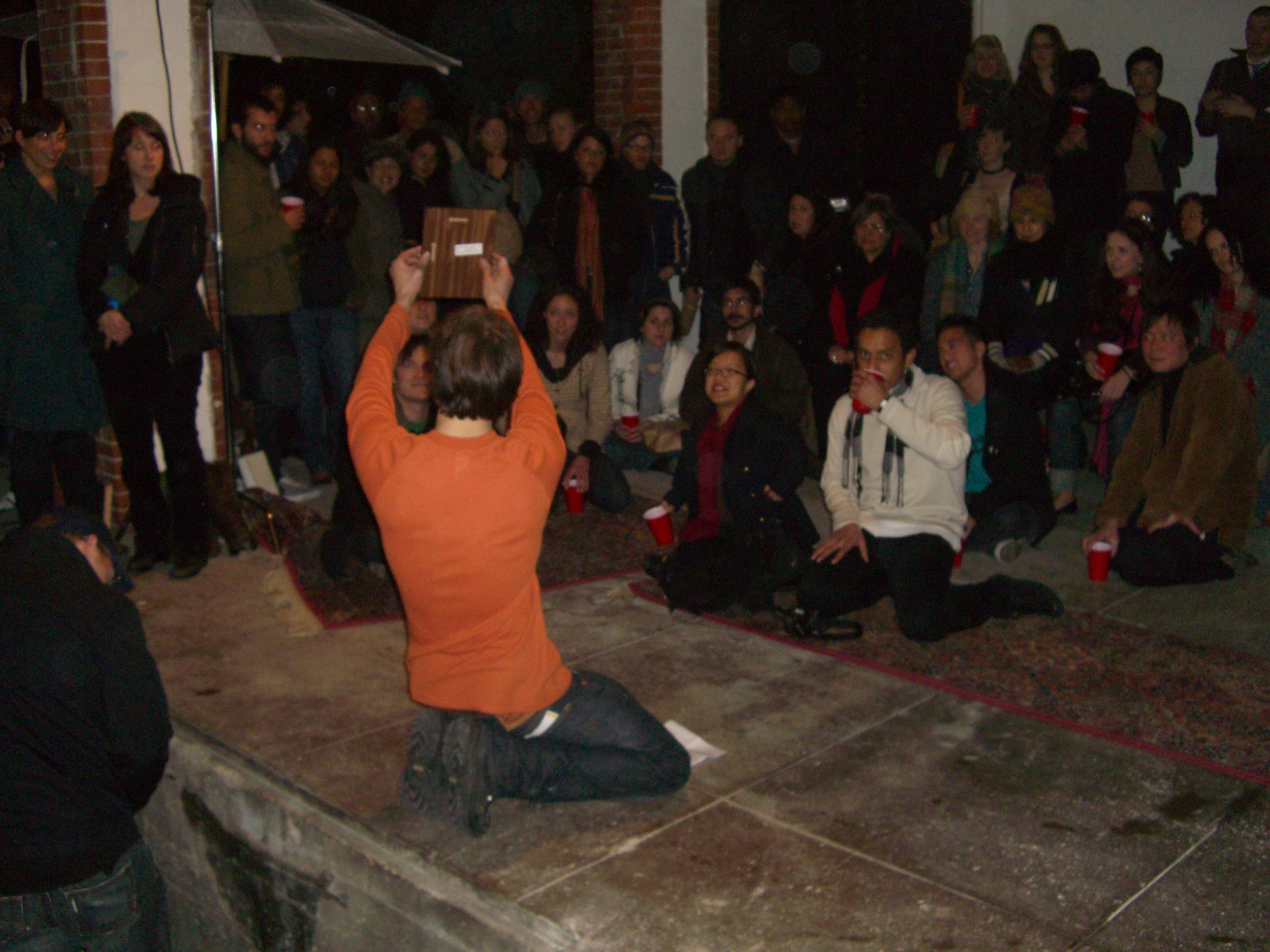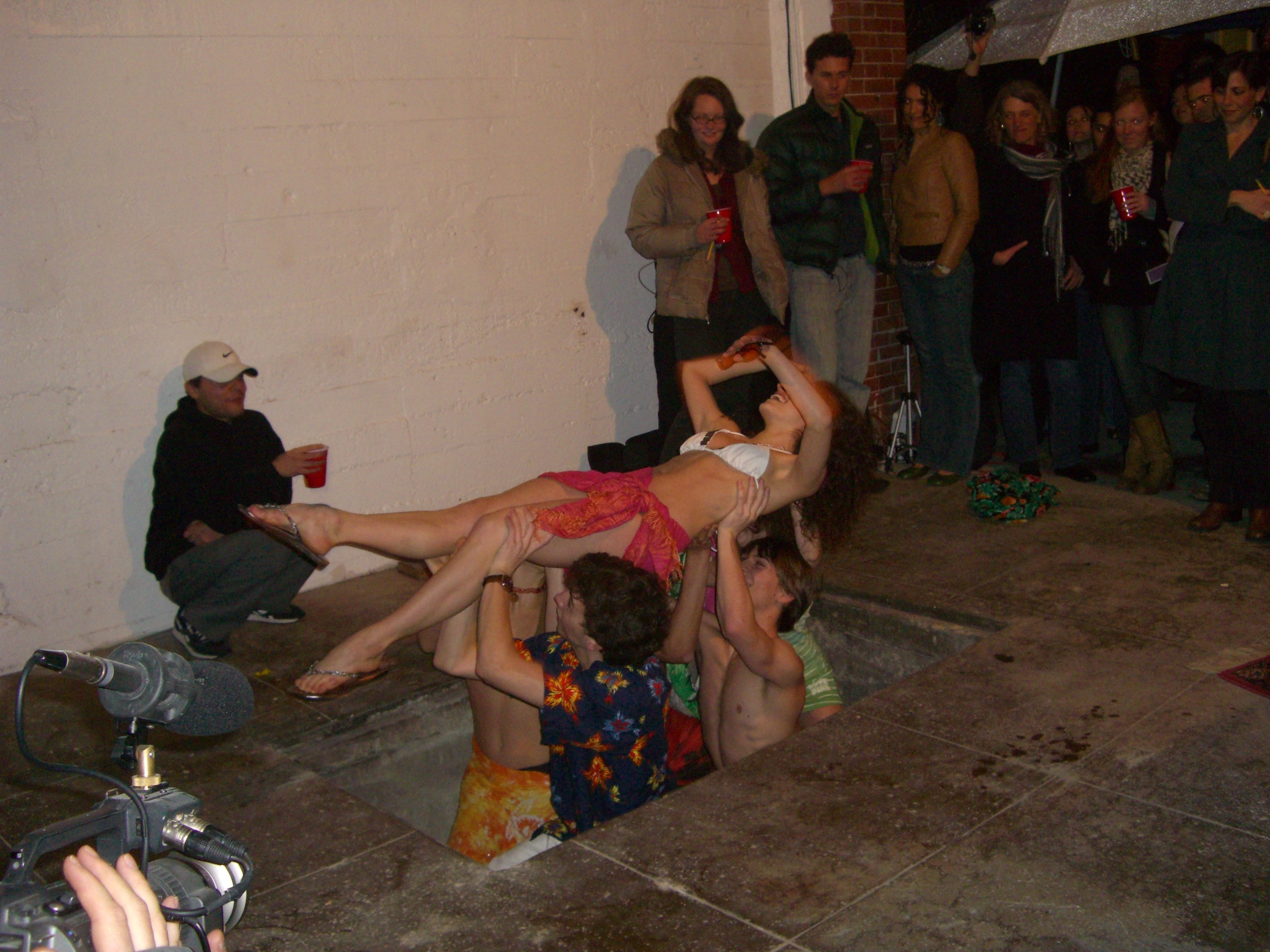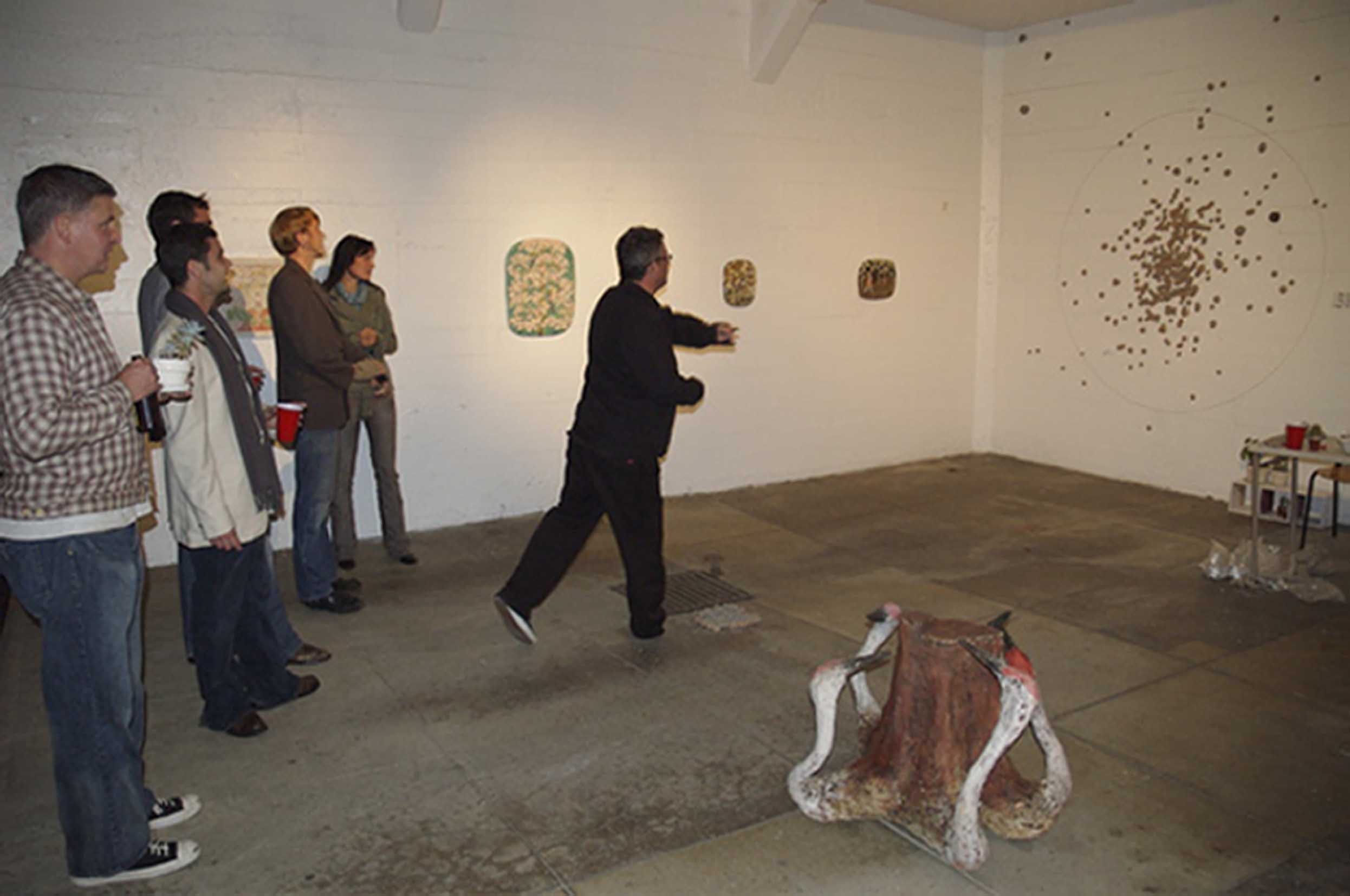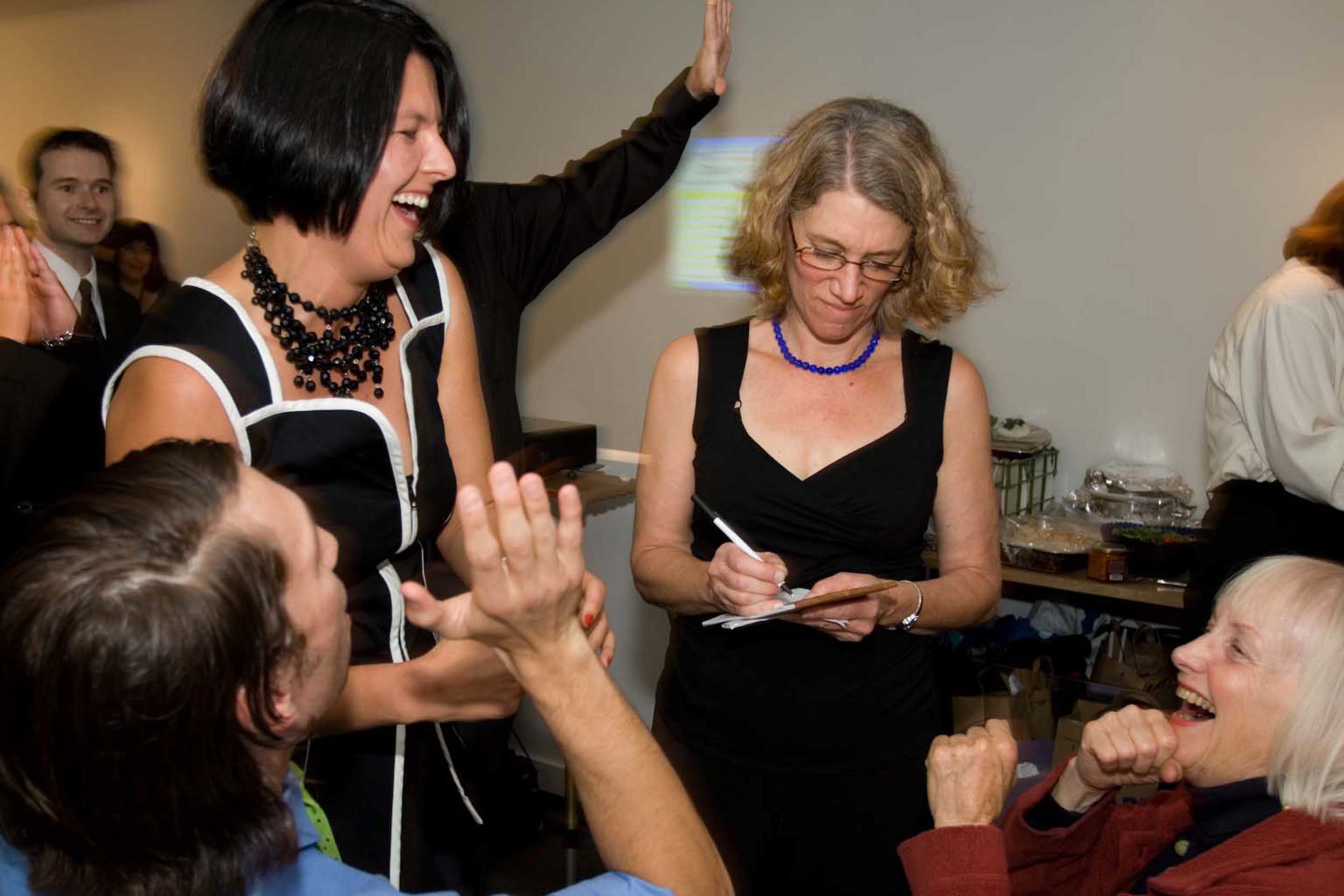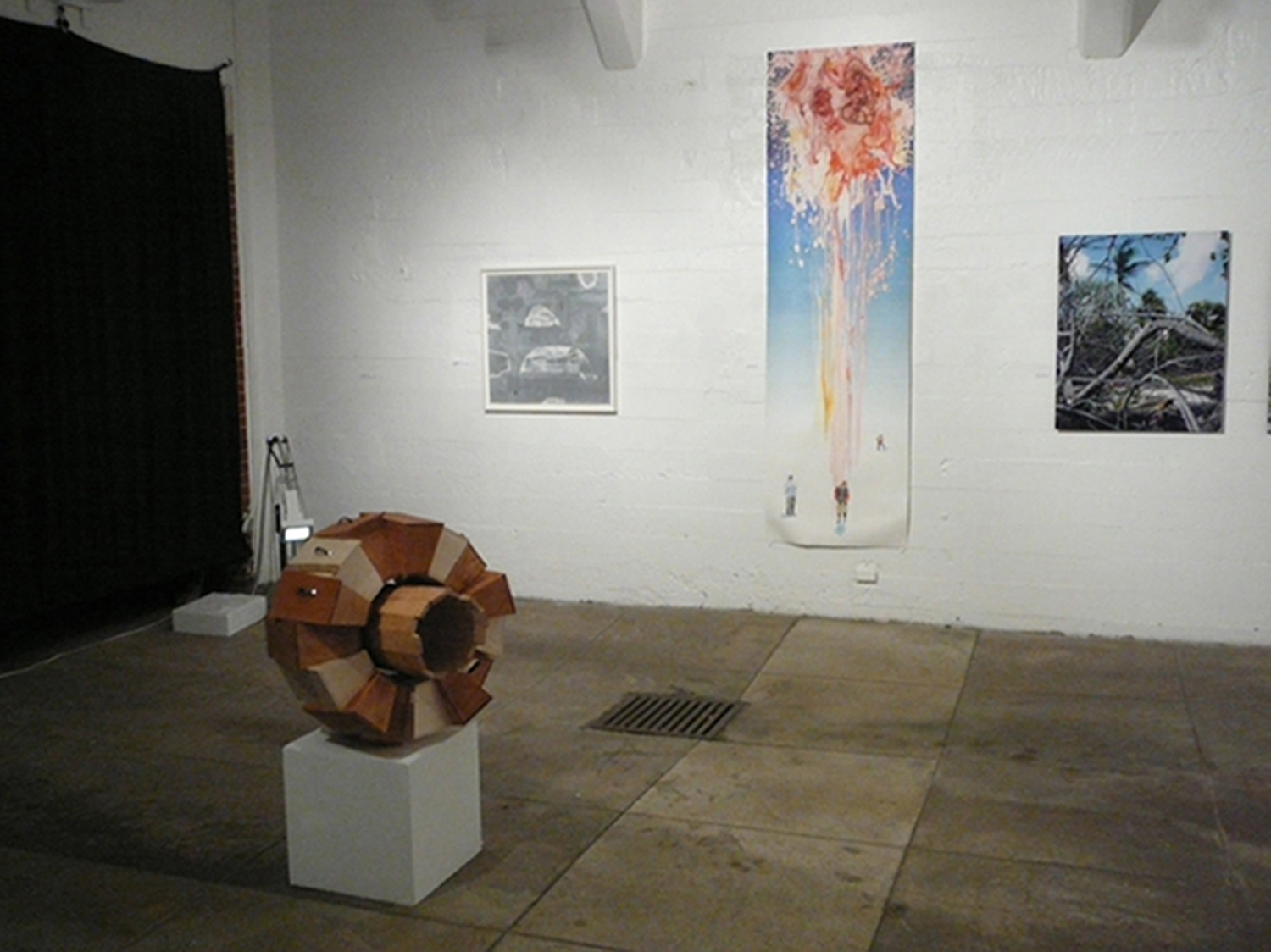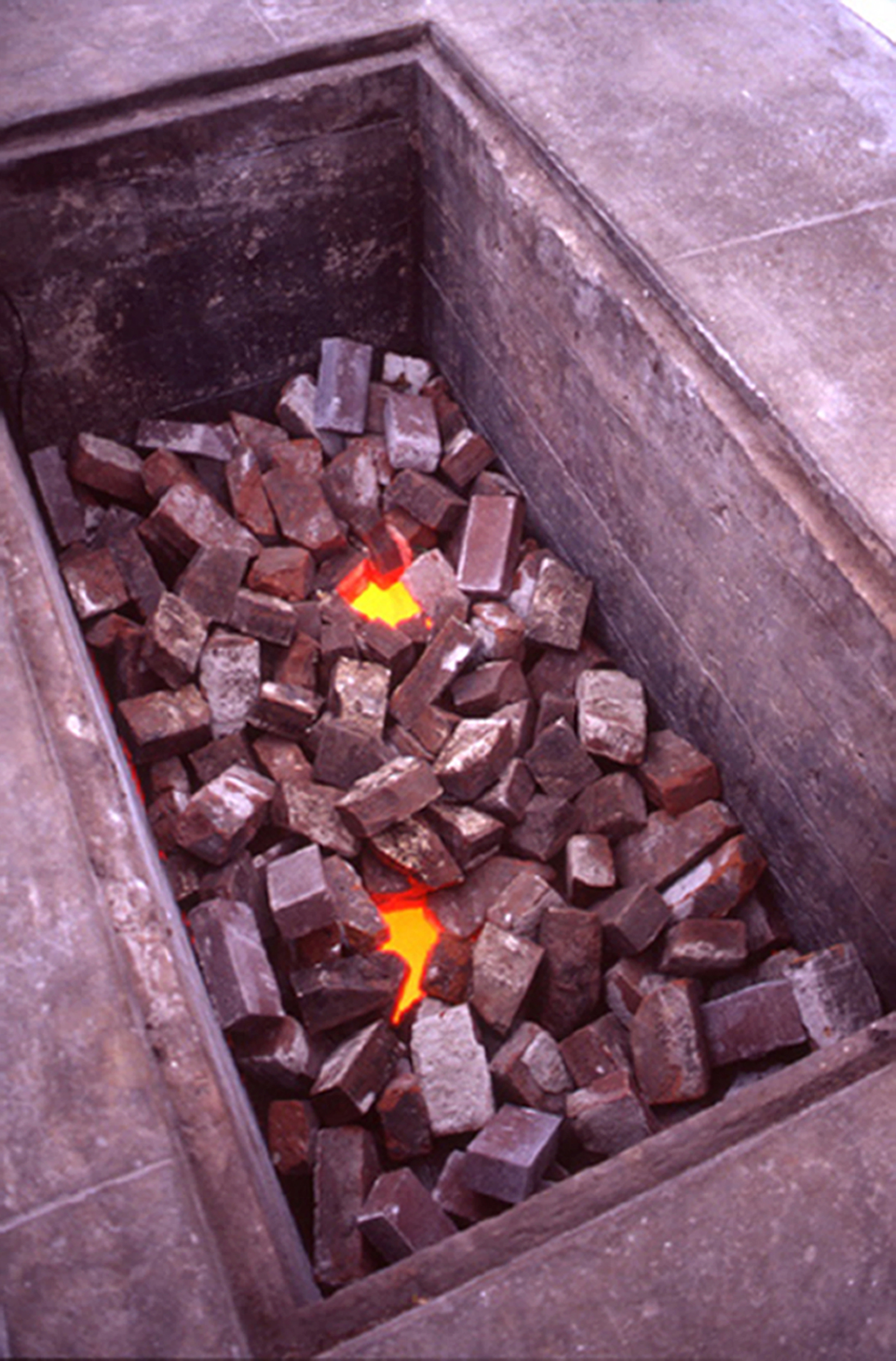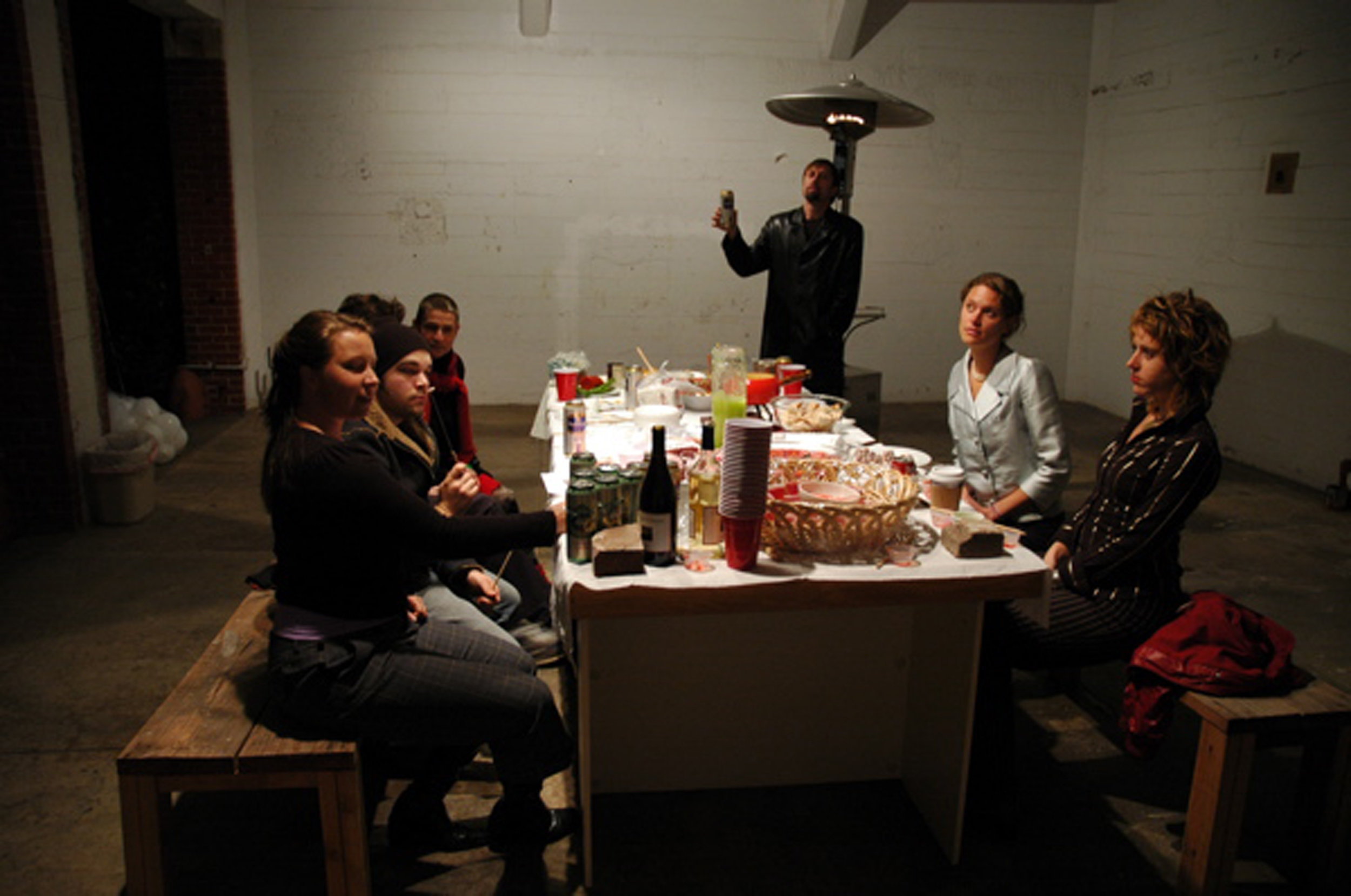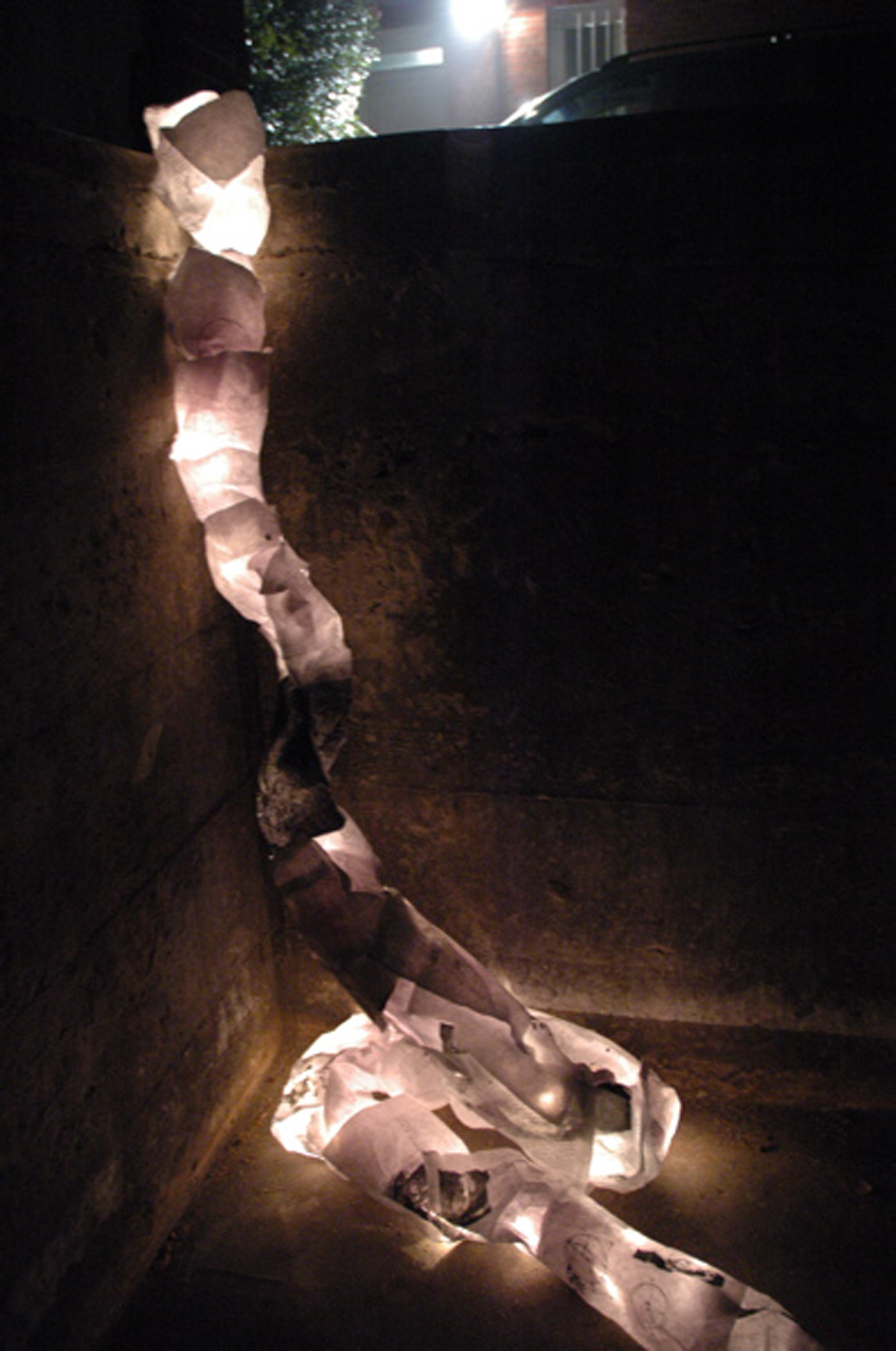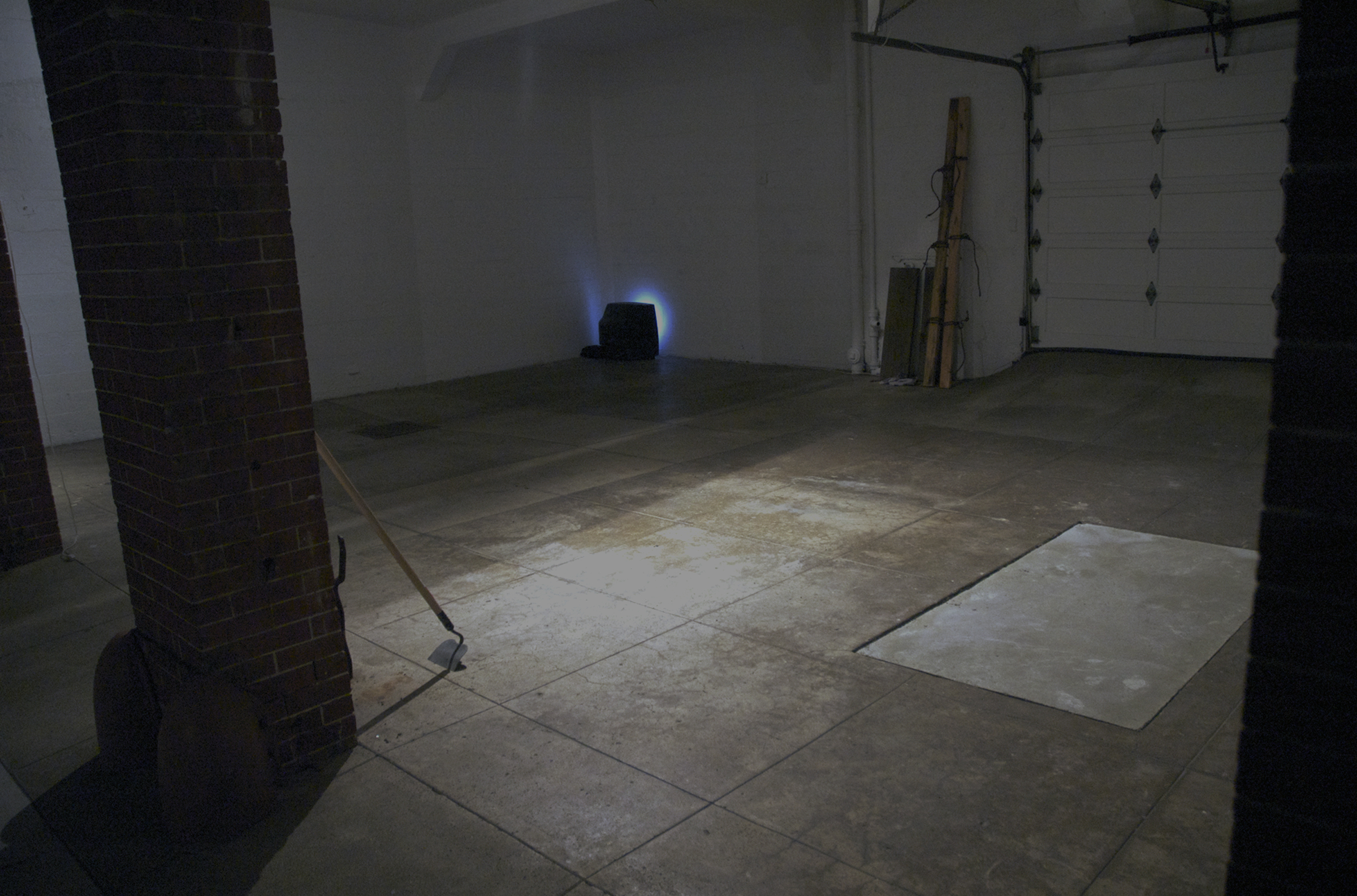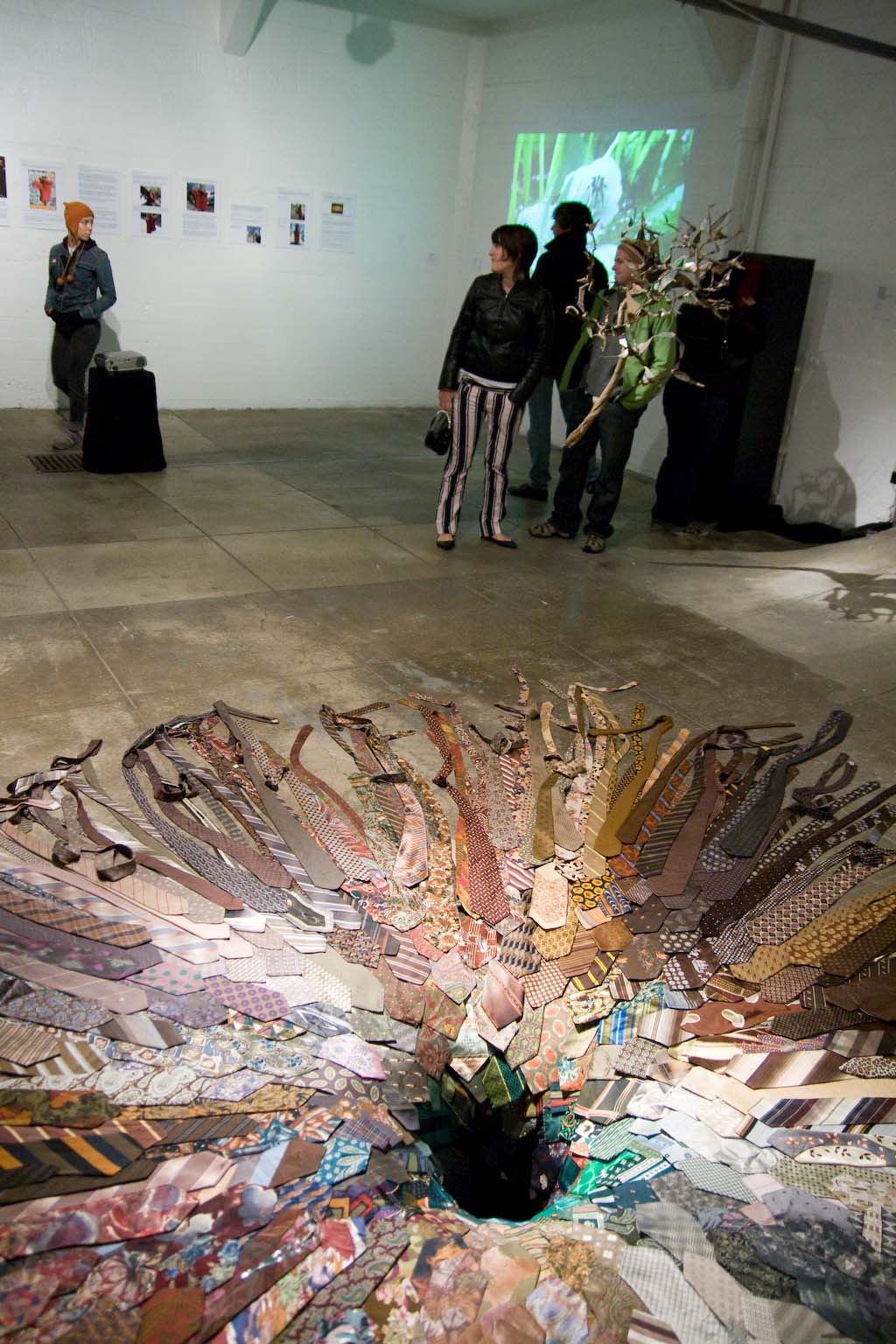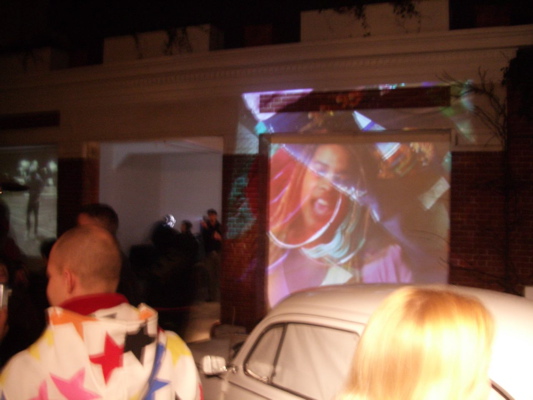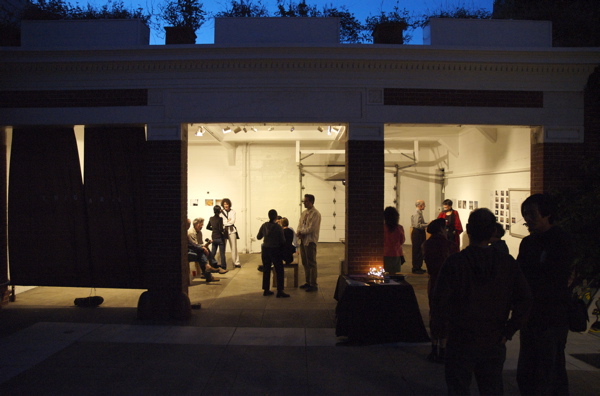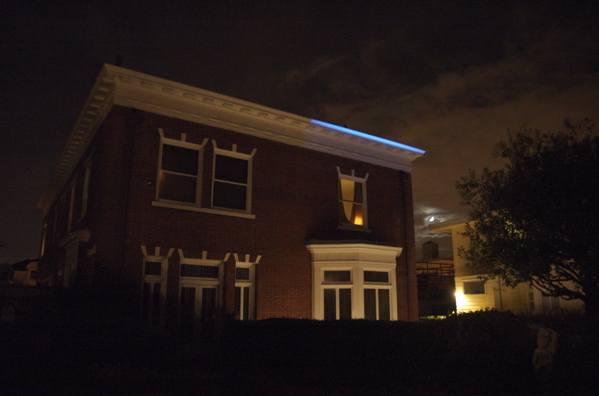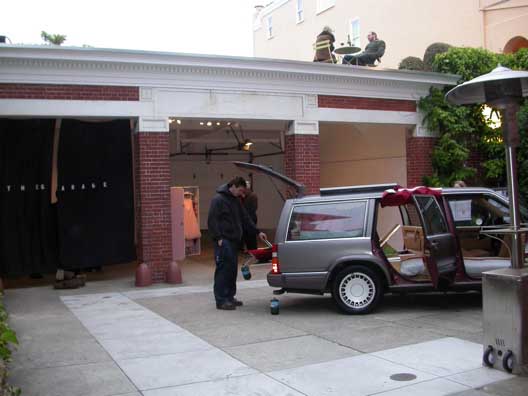The Garage Biennale
The Garage Biennale was an experiment in alternative art contexts, an expression of generosity and a rare intersection between public and private space. Between the years 2003 and 2009, the project combined a family space with an open public programming series of monthly one-night-only exhibitions, events and happenings. The program culminated in a nine-hour performance art marathon called the 100 Performances for the Hole. Eventually the police shut the space down from operating exhibitions as The Garage, according to the police investigators, "my final project violated event major city public ordinance and I was the only person in the history of the city to do it all at one time". For a full listing of the exhibitions, curators and collaborators download the Garage Biennale PDF catalog here with writing by myself, Terri Cohn and Paul Kos.
The following text is an excerpt from the catalog, supported in part by a grant from Southern Exposure's Alternative Exposure program:
On Being Temporary
While I am loathe to declare it, it must be noted that the Garage began through theft, or better yet, through repurposing civic property. It was in 2003 that I found two downed, twelve-foot-tall wooden signposts on a roadside. It seemed like a logical response to steal them and build what I termed a “metacontextual” sculpture. This sculpture consisted of sheetrock walls, for which I used the premade frames as studs. I decided upon a name, and harnessed a vast collection
of energy from all my friends and family.
Shortly thereafter, Paul Kos, a mentor and a friend, challenged me to consider what I would make if I were to create a truly generous artwork. My answer was to begin producing public exhibitions in a private home, to create a space antithetical to the museums and gallery spaces in San Francisco, and make a gallery apart from the family space yet within a private home setting. I placed the project in my garage, an open-air structure without doors, and subject to constant fog and chilling wind. Basically, I had no alternatives, but in actuality, I was drawn to the potential that the physical space held. Each show was one night only, a flash in the pan, a series of moments in which all the energy of a handful of dedicated artists could coalesce into something greater. The Garage was about an aggregate of people, artwork, and hospitality. The unspoken goal was to employ temporality in art production, to make work as a blaze of glory.
Being temporary is being human, but so is longing for permanence. However, impermanence is our nature, and once we embrace it we can forget about loss and failure. Decisions then come with clarity and alacrity. This is the beauty of temporality: you learn that, sometimes, through loss is the only way.
Justin Hoover
Requiescant in Pace
By Paul Kos
If we could get a bird’s eye or even better a Google’s eye view of San Francisco taken over 50 years we would see that:
Artforum started in San Francisco in 1958. We only know the names of David Park and Richard Diebenkorn because that magazine was here and for a short time it was the center of the world. Artforum left, moved to LA, made mention of the people working with light, Robert Irwin, James Turrel, and Maria Nordland. Artforum moved again, this time to New York City leaving a giant vacuum in two California cities.
The gallery scene during the 1960’s in San Francisco was comprised of a few downtown galleries mainly situated at 228 Grant Avenue and a few ahead of the curve oddballs like Dilexi. There were two critics working for the Chronicle, Alfred Frankenstein and Thomas Albright and one critic working for the then thriving San Francisco Examiner, David Bonetti.
The museums, galleries and collectors were not keeping pace with what was considered “avant garde”.
So in 1970, Tom Marioni opened The Museum of Conceptual Art (MOCA), the first “Alternative Art Space” in the United States at 86 Third Street, San Francisco. Two years later it moved to 75 Third street, above Breen’s Bar so it could have a social setting over drinks and food and remained open for 12 more years. Marioni invented the title, “Alternative Art Space” and applied to the NEA for funding and subsequently the NEA created that genre and gave him the first NEA grant in that category in 1972. MOCA was the first San Francisco space to show artists like Chris Burden and Vito Acconci as well as local conceptualists.
Soon after, 2nd generation spaces began springing up all over San Francisco. New Langton Arts, Site/Cite/Sight, La Mamelle, Galeria de la Raza, San Francisco Camerawork, and The Farm. Philanthropist Ann Hatch opened the Capp Street Project followed by 3rd generation spaces like ATA, Southern Exposure, Luggage Store Gallery and the Lab. Most did quite well securing funding from the NEA, hotel tax funds and other public sources through the 70’s and 80’s.
San Francisco at one time had more alternative art spaces than any city in the country. Why, one might ask. Were commercial galleries not showing the most avant garde work? Or had the region, the greater Bay Area, so many artists and too few venues for showing work? Both, appear to be the answer. Robert Atkins writing for Art in America stated “For artists of the '70s, the new alternative spaces offered virtually the only venues for the development of conceptually oriented, noncommercial forms such as video, installations and actions (the term "performance art" wasn't commonly used until the late '70s). This conceptualist bent separated alternative spaces from artists' cooperative galleries, usually commercial spaces where artists banded together to exhibit traditional-format work and collectively pay the rent. Nontraditional curatorial practices also characterized the new alternative spaces: most relied on artists to curate shows, rather than professional curators”.
Enter Jesse Helms, 1989. He convinces Congress that those narthegoods don’t deserve tax dollars to put cucumbers up their ass or to piss on Christ. NEA funding dried up in the 1990s, contributing to the decline of the alternative space movement. Those that took the funding had to book shows far in advance, edit what was shown and in fact by default lose their alternative status and become status quo.
In 2004, Justin Hoover opened the GARAGE. Alternative at the outset as it was not South of Market or in the Mission. It was in the wrong neighborhood, Pacific Heights, the home turf of the Getty’s and the Feinstein’s. GARAGE was odd, it was a three car garage at a private residence with a family, a mother and father, a son (Justin) and a daughter, and a grandmother, not to mention a grand piano, chandeliers, a pool table and an elevator. It was certainly alternative. It opened with Garage Sale, on a Saturday when all garage sales open. It featured an opera by Steven Crone. Other works like Tyson Ayers’Eye of the Tiger was played on wooden slats by cars exiting the garage. In 2007, 100 Performances opened and Guy Overfelt in a rental car drove into the grease pit of the garage a 6’ x 4’ hole, the car exited when balloons filled by exhaust lifted the car out. Tom Marioni and Sharon Grace in a convertible drove into and out of the GARAGE portending that the end was near. Residency Project required that 24 hour, artist residents, besides showing their work, have lunch with grandma and/or tea with mom. Besides Justin Hoover, guest curators were also invited to curate shows. Illustrated Encyclopedia of Sex, Flux You, Open House, Highway to Hell were some that followed, ending with The Car Show, the latter was shut down by the SF City Entertainment Committee for violating every city ordinance on the books, including noise, health, parking, alcohol, etc. The GARAGE was supported by the public, Justin Hoover, his family, and the neighborhood. It lasted 5 years.
“Alternative Space”: MOCA was the first, is the GARAGE the last?.
R.I.P.
Author’s note: a challenge.
Alternative spaces must mutate faster and fill gaping holes. Their monies must come from new sources and they must stay ahead of the game. Could Alternative space be replacing a tired, old, parochial press? I suggest the next alternative space be a new periodical ,both paper and online. Look at the stature of Zurich with Parkett Magazine, at Milan with Flash Art, at San Francisco when it had Artforum.
Bibliography:
On edge: alternative spaces today
Art in America , Nov, 1998 by Robert (American physician) Atkins
